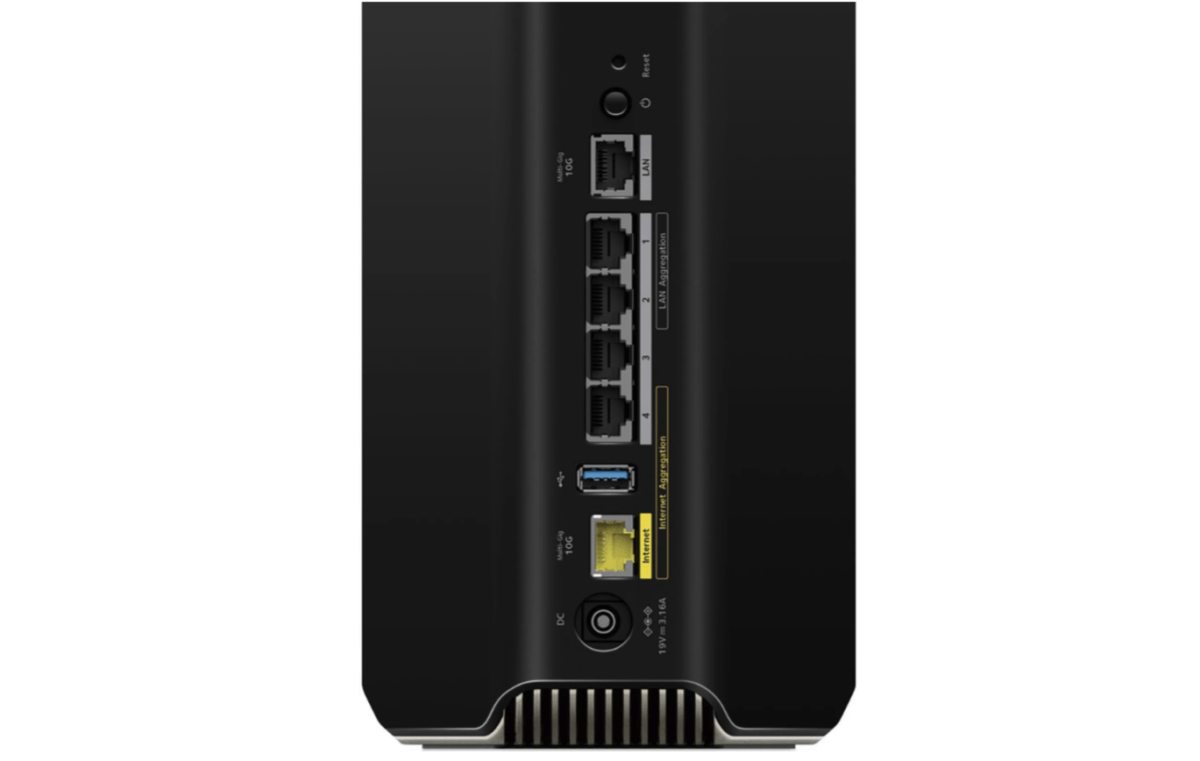Manufacturer Netgear recently unveiled the Nighthawk RS700 router, featuring the latest Wi-Fi 7 technology with a lot of promise. However, it should be kept in mind that the benefits of this router will only be fully exploited once Wi-Fi 7 compatible devices and equipment become widely available in the market.
Wi-Fi 6, Wi-Fi 6E, Wi-Fi 7… have we lost you? Manufacturer Netgear recently unveiled the Nighthawk RS700 router, featuring the latest Wi-Fi 7 technology. On paper, this return promises faster and more reliable connections. In reality, the situation is more complex, as the Wi-Fi 7 ecosystem is still in its infancy.
A very complete router
The Nighthawk RS700 router sports a tower-shaped design, breaking with the futuristic aesthetics of the previous range to approach the AmpliFi Alien or Linksys Velop models. The router incorporates eight internal antennas that provide extended coverage and support up to 200 simultaneously connected devices. Naturally, such performance comes at a high cost… The Nighthawk RS700 will be available in the spring, with a retail price of $699.99.

The Nighthawk RS700 router is equipped with 10 Gb/s LAN and WAN ports and a USB 3.0 port for network storage. It is compatible with Netgear’s DOCSIS 3.1 cable modems, enabling gigabit+ Internet services. Later, a software update will allow multiple RS700 units to be connected in a mesh network for very large homes.
What will Wi-Fi 7 bring?
As a reminder, the WiFi 7also called 802.11BE, is the successor to the Wi-Fi 6E and Wi-Fi 6 standards. This new standard offers theoretical transfer speeds of up to 46 Gbps, far superior to earlier standards. Wi-Fi 7 also includes the function Multi-Link Operation, which allows compatible devices to simultaneously connect to multiple bands (such as 5 GHz and 6 GHz) to improve connection reliability. Technology Flexible Channel Usage comes in turn to block interference on the channels without interrupting the traffic.
| Standard | WiFi 5 | WiFi 6 | WiFi 6E | WiFi 7 |
|---|---|---|---|---|
| Release date | 2013 | 2019 | 2021 | 2024. |
| IEEE standard | 802.11ac | 802.11ax | 802.11ax | 802.11be |
| Maximum data rate | 3.5 Gbps | 9.6 Gbps | 9.6 Gbps | 46 Gbps |
| Bands | 5GHz | 2.4GHz, 5GHz | 2.4GHz, 5GHz, 6GHz | 2.4GHz, 5GHz, 6GHz |
| Channel size | 20, 40, 80, 80+80, 160MHz | 20, 40, 80, 80+80, 160MHz | 20, 40, 80, 80+80, 160MHz | Up to 320MHz |
| Modulation | 256-QAM OFDM | 1024-QAM OFDMA | 1024-QAM OFDMA | 4096-QAM OFDMA Enhanced |
| In debit | 4×4 MIMO DL MIMO | 8×8 UL/DL MU-MIMO | 8×8 UL/DL MU-MIMO | 16×16 UL/DL MU-MIMO |
As a user, what will stand out to you the most are the increased connection speeds and greatly reduced latency. These improvements could have a major impact on online gaming, augmented reality and virtual reality. In environments such as businesses, stadiums, conference rooms and shopping malls, Wi-Fi 7 will prove particularly advantageous for managing a high number of simultaneous connections.
Very few devices today are Wi-Fi 7 compatible. Also, you won’t necessarily get the performance advertised. For our current laptops and smartphones, with a theoretical speed of Wi-Fi 6 of 2.4 Gb/s, the theoretical speed of Wi-Fi 7 will be 5.8 Gb/s, because the devices are only equipped with two streams (for a total of 320 MHz with 4096-QAM frequency modulation). In addition, 30 to 40% of performance must be removed from the theoretical performance displayed. Nevertheless, it remains a very interesting development.
Qualcomm, MediaTek and Intel are actively working on integrating Wi-Fi 7 into their chips. The deployment will therefore grow, but there is no need to rush to buy the first compatible router. For now, it would not bring any real benefits.
Want to join a community of enthusiasts? Our Discord welcomes you, it’s a place of mutual aid and passion around tech.
